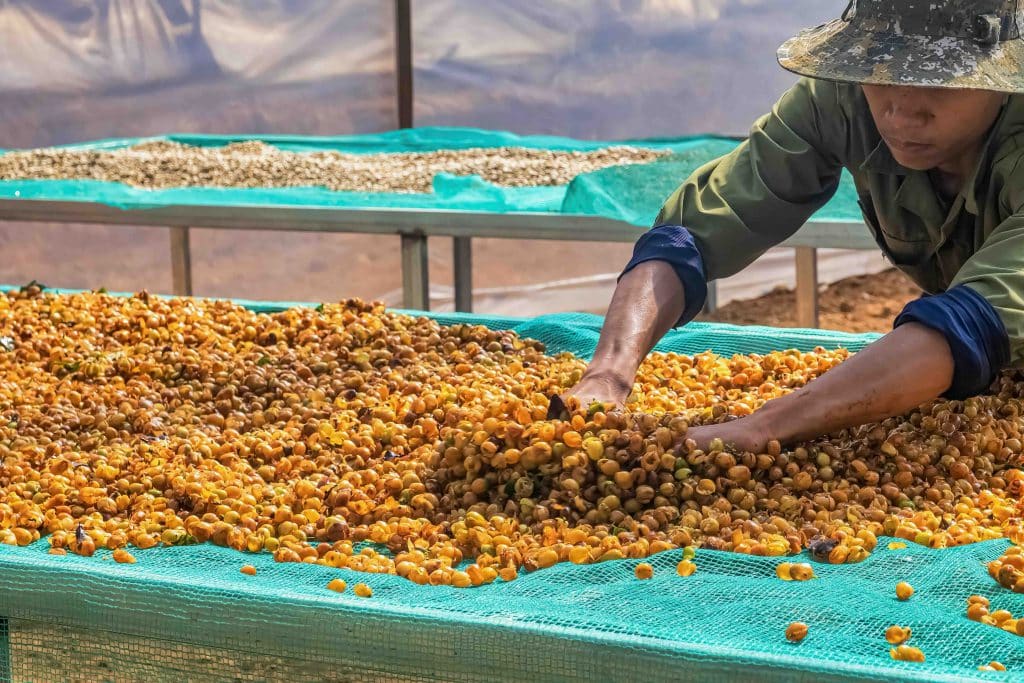Story: Thai Nga
Photos: Tonkin
As climate change continues to disrupt the global economy, investing in green development, environmental protection, and carbon reduction has become essential. In Vietnam, agriculture is embracing sustainable practices with modern, eco-friendly farming methods. Join Heritage Magazine as we explore clean and green garden models in Lam Dong, the country’s hub for growing flowers, vegetables, and fruits.

Sparkling “suns” at Ho Na Strawberry Garden
After extensive research on the growth characteristics of different strawberry varieties, traditional farming methods, and new technologies – along with a study of green agriculture and the local ecosystem – the owner of a small garden in Da Sar chose to cultivate strawberries using modern techniques, organic fertilizers, and beneficial microorganisms.
The first ripe, red strawberries brought the gardener immense joy. But fruit-bearing was just the initial step – what followed were days of closely monitoring the plants, adjusting their nutrition to ensure a stable yield and consistent quality. Each morning, plump strawberries hang heavily from the plants, swaying in the breeze and catching the sunlight, like tiny, sparkling suns lighting up the garden.
Beyond selling its produce, Ho Na Strawberry Garden has introduced experiential tourism, inviting visitors to tour the strawberry fields and pick their own fruit. It has since become a popular destination on the highland tourism map, offering guests a unique hands-on experience.

Experiential tourism at ThyThy Farm
In 2018, ThyThy Farm completely abandoned chemical fertilizers and pesticides, instead prioritizing soil improvement with organic and microbial fertilizers – embracing the challenges of effort and patience. Covering only two hectares in the Cau Dat hills, this farm has cultivated a green, clean, and diverse ecosystem. Rows of lush coffee plants thrive alongside persimmon, avocado, and other fruit trees.
ThyThy Farm’s coffee is highly rated, scoring 80 points under the Coffee Quality Institute (CQI) standards – a globally recognized benchmark for specialty coffee. To ensure optimal roasting and processing, the farm collaborates with Intenso Coffee Roadster, a renowned coffee roaster in Ho Chi Minh City.
ThyThy Farm quickly expanded into agricultural tourism, offering persimmon-picking tours, garden visits, and hands-on coffee processing sessions. Visitors enjoying a cup of the farm’s coffee can savor the distinct richness of Arabica beans while appreciating the farm’s commitment to sustainable green agriculture.

Hieu Nghia Garden – barren land brought to life
In 2020, a garden owner on the outskirts of Bao Loc decided to abandon chemical fertilizers entirely, switching to organic biological fertilizers. Various plant species were introduced to cover the soil, complemented by indigenous microorganisms that accelerate organic matter decomposition. This approach enhances nutrient absorption, suppresses harmful bacteria, and contributes to environmental protection.
The garden also makes full use of readily available materials like coffee grounds, tea leaves, grass, straw, and banana stems as on-site organic fertilizers. Ecological balance is maintained, and pests controlled naturally through companion planting, intercropping, and crop rotation. Non-GMO vegetable, root, and fruit varieties were carefully selected or exchanged with other organic farms. Thanks to the gardener’s persistence, produce from Hieu Nghia Garden has earned the trust of customers far and wide.
Rather than keep the steps of building a green garden model secret, the owner generously shares this knowledge to help develop a wider community of safe growers. Many visitors, including students and agricultural researchers, come to this garden to exchange ideas and learn from the farmer’s steadfast approach in this new context.
Purple dreams on Lavender Dasar Hill
Located along National Highway 27C, Lavender Dasar Hill is notable for its efforts to preserve the natural topography and fertile soil of the Da Sar region in Lac Duong district, Lam Dong province. The garden grows the finest plant varieties, nurtured with organic and microbial fertilizers. As the owner puts it, they “add nothing but love” for these dreamy flowers to the region’s poetic landscape.
The fragrant aroma of lavender fills the air, while the scenery at Lavender Dasar Hill evokes the charm of Provence, France. Golden sunlight spills over the rolling hills, with gentle waves of purple flowers swaying softly, casting a magical hue into the blue sky. The view is both indescribable and mesmerizing, making it impossible for visitors to look away or leave. Thanks to its natural beauty and truly clean, green environment, Lavender Dasar Hill has quickly become a popular tourist destination in the northern outskirts of Dalat.
As well as protecting natural resources and the ecological environment, green agriculture in the Lam Dong Highlands is supporting sustainable tourism development and contributing to Vietnam’s green economy.










